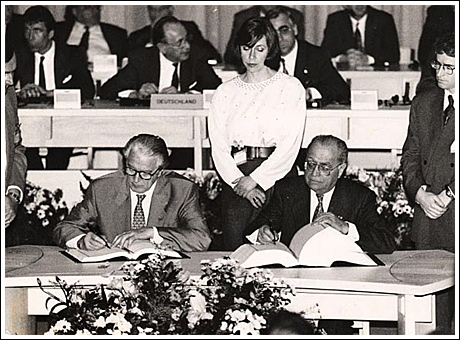EU Events
Follow Attend Connect

Maastricht Treaty Anniversary

Venue: Europe
The Maastricht Treaty (formally, the Treaty on European Union or TEU) undertaken to integrate Europe was signed on 7 February 1992 by the members of the European Community in Maastricht, Netherlands. On 9–10 December 1991, the same city hosted the European Council which drafted the treaty. Upon its entry into force on 1 November 1993 during the Delors Commission,it created the European Union and led to the creation of the single European currency, the euro. The Maastricht Treaty has been amended by the treaties of Amsterdam, Nice and Lisbon.
The treaty led to the creation of the euro. One of the obligations of the treaty for the members was to keep "sound fiscal policies, with debt limited to 60% of GDP and annual deficits no greater than 3% of GDP".
The treaty also created what was commonly referred to as the pillar structure of the European Union.
The treaty established the three pillars of the European Union—one supranational pillar created from three European Communities (which included the European Community (EC), the European Coal and Steel Community and the European Atomic Energy Community), the Common Foreign and Security Policy (CFSP) pillar, and the Justice and Home Affairs (JHA) pillar. The first pillar was where the EU's supra-national institutions—the Commission, the European Parliament and the European Court of Justice—had the most power and influence. The other two pillars were essentially more intergovernmental in nature with decisions being made by committees composed of member states' politicians and officials.
All three pillars were the extensions of existing policy structures. The European Community pillar was the continuation of the European Economic Community with the "Economic" being dropped from the name to represent the wider policy base given by the Maastricht Treaty. Coordination in foreign policy had taken place since the beginning of the 1970s under the name of European Political Cooperation (EPC), which had been first written into the treaties by the Single European Act but not as a part of the EEC. While the Justice and Home Affairs pillar extended cooperation in law enforcement, criminal justice, asylum, and immigration and judicial cooperation in civil matters, some of these areas had already been subject to intergovernmental cooperation under the Schengen Implementation Convention of 1990.
(source)
#EUevents
Powered by iCagenda